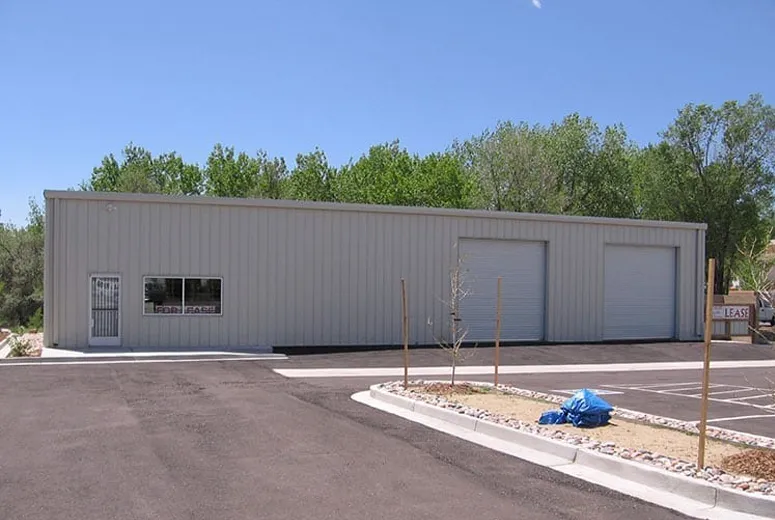Workshop steel buildings are highly functional structures designed to meet the needs of various industries, offering durability, flexibility, and efficiency. These buildings are ideal for activities such as manufacturing, equipment maintenance, and storage, making them a popular choice for businesses.
1. Strength and Durability
Constructed from high-quality steel, workshop steel buildings are incredibly strong and resistant to harsh environmental conditions, including heavy snow, strong winds, and corrosion. Their robust structure ensures longevity and minimal maintenance, making them a cost-effective solution.
2. Customizable Design
Workshop steel buildings are highly adaptable, featuring open floor plans and clear-span interiors that provide maximum space utilization. They can be customized with features like mezzanines, partitions, and overhead cranes to accommodate specific operational needs. The height, width, and layout can also be tailored for various workshop activities.
3. Quick and Efficient Construction
Prefabricated steel components are manufactured off-site and assembled on-site, significantly reducing construction time. This method ensures faster project completion and lower labor costs compared to traditional construction methods.
4. Energy Efficiency
Modern workshop steel buildings incorporate energy-efficient designs, such as insulated panels, reflective roofing, and natural ventilation systems. These features help reduce energy consumption and create a comfortable working environment.
5. Sustainable and Cost-Effective
Steel is 100% recyclable, making workshop steel buildings environmentally friendly. Additionally, their low maintenance requirements and long lifespan result in reduced operational costs over time.
In conclusion, workshop steel buildings combine strength, adaptability, and efficiency, making them a reliable and sustainable choice for a variety of industrial and commercial applications.
What Is a Workshop Building?
A workshop building is a versatile structure designed to facilitate various activities such as manufacturing, maintenance, repairs, and creative work. These buildings are commonly used in industries like automotive, woodworking, metal fabrication, and even for small-scale personal or business projects.
Workshop buildings are characterized by their functional design and open layout, which provide ample space to accommodate machinery, tools, and workstations. They often include high ceilings to support equipment such as cranes or ventilation systems, as well as large doors for easy access and movement of materials.
Modern workshop buildings are frequently constructed using steel or prefabricated materials, which offer strength, durability, and resistance to environmental factors. Steel workshops, in particular, are valued for their ability to withstand heavy usage and extreme weather conditions, ensuring long-term reliability.
In addition to structural durability, workshop buildings are designed for customization and efficiency. Features such as partitioned areas, storage spaces, and built-in workbenches can be tailored to suit specific needs. Advanced options like insulated panels and energy-efficient lighting help create a comfortable and sustainable working environment.
Workshop buildings are also known for their cost-effectiveness and quick construction time, especially when prefabricated components are used. These features make them an attractive option for businesses and individuals seeking reliable, low-maintenance solutions for their workspace needs.
In summary, a workshop building is a practical and adaptable structure that supports a wide range of activities, providing an efficient and durable environment for both industrial and personal use.
What is the difference between a metal building and a steel building?
While the terms "metal building" and "steel building" are often used interchangeably, they refer to distinct concepts in construction, with differences in materials, applications, and design. Understanding these distinctions is crucial when selecting the right structure for a project.
1. Definition and Material Composition
A metal building is a broad term encompassing any structure made primarily of metal components, which can include steel, aluminum, or other alloys. These buildings may combine different metals for specific applications, such as lightweight aluminum for roofing or steel for structural support.
A steel building, on the other hand, is a specific type of metal building constructed entirely or predominantly from steel. Steel’s strength, durability, and cost-effectiveness make it a preferred material for industrial and commercial structures.
2. Durability and Strength
Steel buildings are known for their exceptional load-bearing capacity and resistance to extreme weather, making them ideal for large-scale projects like warehouses or factories. Metal buildings that incorporate lighter materials may not offer the same level of structural strength but are suitable for smaller-scale uses such as sheds or temporary structures.
3. Applications
Steel buildings are widely used in industrial, commercial, and agricultural sectors due to their robustness and scalability. In contrast, metal buildings, depending on the material mix, may be used for decorative purposes, residential carports, or portable units.
In summary, all steel buildings are metal buildings, but not all metal buildings are steel. Steel structures are favored for heavy-duty applications, while metal buildings offer flexibility in design and materials for varied uses.











